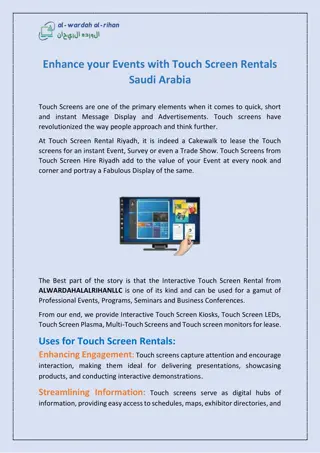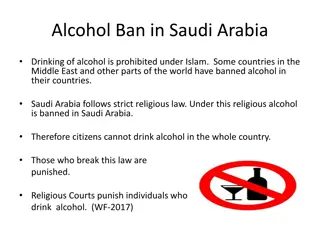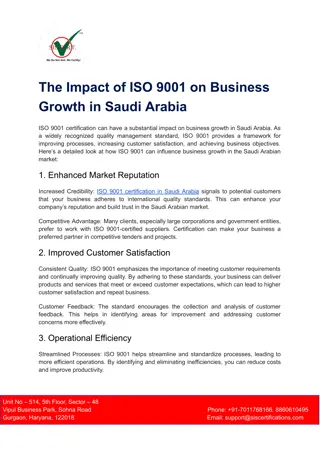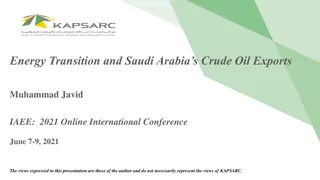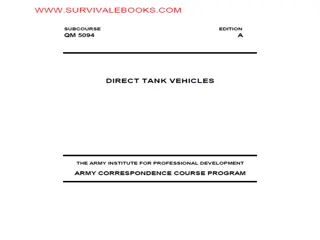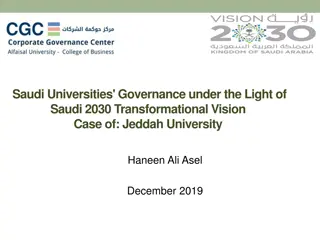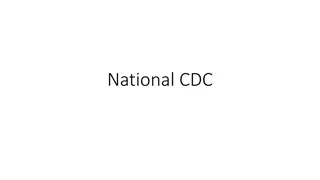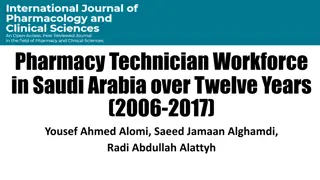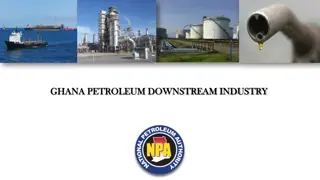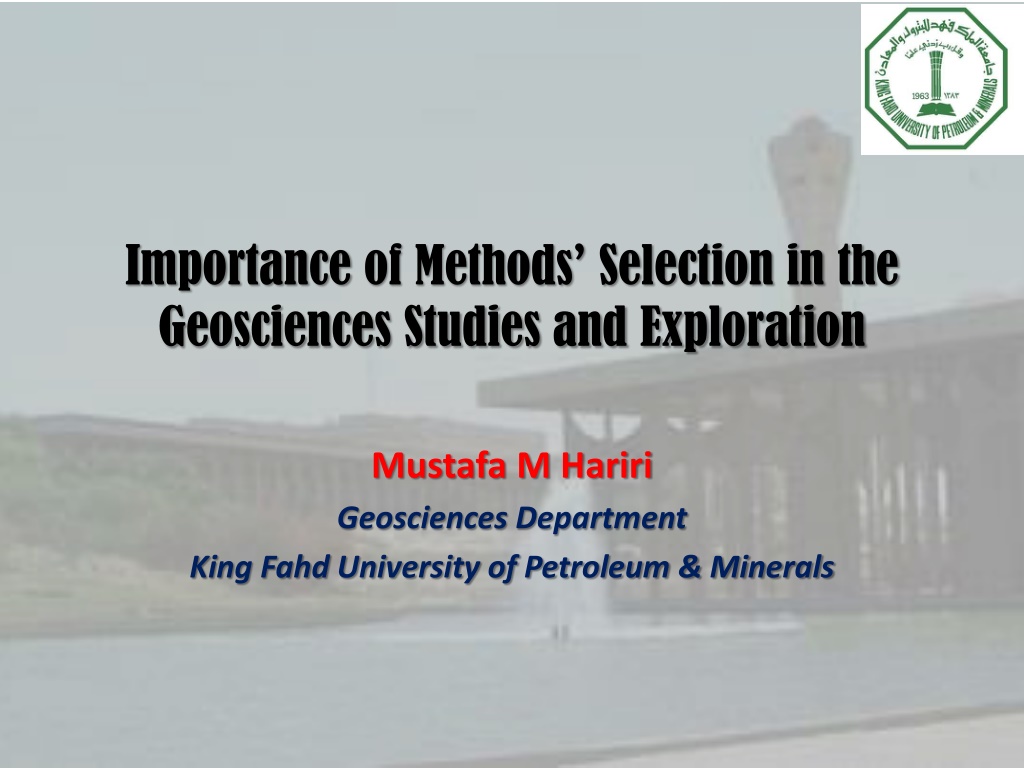
Importance of Methods Selection in Geosciences Studies and Exploration
Understanding the significance of method selection in geosciences studies and exploration is crucial for planning, research, and decision-making. Geology plays a vital role in various aspects of society and helps in characterizing the Earth's framework, anticipating climate effects, managing resources, and mitigating environmental hazards. Scientific methods guide the process with purpose, research, hypothesis, experiment, analysis, and conclusion.
Download Presentation

Please find below an Image/Link to download the presentation.
The content on the website is provided AS IS for your information and personal use only. It may not be sold, licensed, or shared on other websites without obtaining consent from the author. Download presentation by click this link. If you encounter any issues during the download, it is possible that the publisher has removed the file from their server.
E N D
Presentation Transcript
Importance of Methods Selection in the Geosciences Studies and Exploration Mustafa M Hariri Geosciences Department King Fahd University of Petroleum & Minerals
Outlines Importance of Geology and Geologic Studies Steps in Scientific Methods Planning for Studies & Researches Type of Geologic Studies Motivation Factors Control Methods Selection Step of Methods Selection Some Examples of Methods Conclusion
Geology is an important subject Geology is an important subject that directly involves the human-being lives. The Earth system includes and connects atmosphere, oceans, land, and life. It concern with origin of energy and mineral resources, the evolution of life, climate change, natural hazards, ecosystem structures and functions, and the movements of nutrients and toxicants (USGS 2011). The science of geology has the power to help us understand the processes that link the physical and biological world so that we can model and forecast changes in the system
Importance of Geologic Studies Importance of Geologic Studies (USGS 2011) Geology for a Changing World 2010 2020: Implementing the U.S. Geological Survey Science Strategy Six Goals Stated by USGS Goal 1. Characterize and Interpret the Geologic Framework of the Earth Through Time Goal 2. Understand Earth Surface and Climatic Processes and Anticipate Their Effects on Ecosystem Health and Change Goal 3. Understand and Quantify the Availability of Earth s Natural Resources in a Global Context Goal 4. Increase the Resilience of Communities to Geologic and Environmental Hazards Goal 5. Apply the Most Advanced Technologies and Best Practices To Effectively Acquire, Analyze, and Communicate Our Data and Knowledge Goal 6. Develop a Flexible and Diverse Workforce for the Future
Importance of Geologic Studies Elisabeth H ggquist , Patrik S derholm (2014) For decision-making in a wide range of societal activities (among them) Groundwater development, sustainable use and protection Environmental impact assessments The exploration and development of minerals and fuels Understanding and managing the causes of geologic hazards Construction of infrastructure projects City planning including zoning and landscaping Regional planning such as siting and permitting industrial facilities
Six steps of Scientific Methods Purpose Research Hypothesis Experiment Analysis Conclusion
Planning for Studies and Researches Issues to be considered Objectives Level of study Expected Outcomes Available Resources Budget Timeframe
GEOLOGICAL STUDIES ACADEMIC INDUSTRIAL
Type of Geological Studies Applied Research Theses and Dissertation Academic Basic Research
Type of Geological Studies Projects Industrial Research and Development
Nature of Studies Industrial and Exploration Academic and Basic Research Based on needs and applications and future forecast Cost is a major factor Not limited to available resources Consider the tools where they are Based on needs and necessity Cost is not a major factor (if supported) Limited to available resources Always consider the local available tools first
Motivation Previous experience in mineral exploration (go to higher level before the basic level) Supervision of several thesis and dissertation (select method not needed for the research) Observation of students work as member in the committees (conduct higher methods although results were obtained from earlier ones)
Factors Control Methods Selection Objectives Available fund Timeframe
Objectives Effect on Methods Selection General (Reconnaissance) Doesn t need high cost Can be conducted with free available resources (Google Earth) Detailed (should be justified) More applied methods Larger budget and higher cost
Funds Effect on Methods Selection Limited fund Will probably force using available resources more efficiently Limited fund can be an obstacle to conduct highly sophisticated methods unless they are essential
Timeframe Effect on Methods Selection Time factor (how fast the results are needed?) Limited time available force selecting fast results method Fast needed results may result in excluding longer time needed methods
Observation Rational Nature of study is controlling the type of methods selection Stage of study is important (reconnaissance or advanced exploration or production) Objective of study is an essential base for selecting the method/s of study Budget some times force less cheaper and semi quantities methods If all methods are available and budget is sufficient a wise decision should be taken based on real need
Planning for Studies and Researches Issues to be considered Objectives Level or stage of study Expected Outcomes Available Resources Budget Timeframe
Steps for Methods Selection Careful Analysis of Objectives Consider the methods from Initial planning stages based on Goal Select methods that fit with budget and time frame Consider the available less cost methods Availability of sophisticated highly cost methods does not mean that should be used
Why Methods Selection is important? Selection of right method leads to right results and interpretation Optimization of the cost and avoid loses Wise utilization of the time frame
Some Examples of Methods Regular /or Costly Methods Available /or Less Cost Remarks Mapping in the field Mapping through Remote sensing and Google Earth Most features can be defined specially for structural ad tectonics Borehole Drilling Geophysical Methods Selecting the right method Geochemical Methods XRD, XRF, EM When should go to the costly ones Petrographic
Conclusions Geologic studies as other scientific studies based on several steps among the selection of analysis and test Methods of analysis and tests are important and integral part of study and should be considered from planning stage of the project based on objectives and goals Carful selection of methods based on objective, funds and timeframe
Conclusions Optimization of cost can be achieved through carful selection of the methods Available free and less costly methods should be considered first Availability of different analysis methods doesn t mean that should be used Goals and objectives of study should not be changed from the initial ones
Thank You
. Financial cost and effectiveness of the methods are the most important issues. Additionally, integration between different methods and their application order are very essential to reach the best cost effectiveness and optimization. Methods such as remote sensing, mapping, various geophysical and geochemical surveys, and drilling are among the methods that were used for long time. Those methods were also integrated, recently, with more sophisticated and advanced techniques such as petro-physics, and wireline logs analysis in hydrocarbon industry, and organic bound and electro-geochemical behavior in minerals studies. To optimize the cost and efficiently utilize the resources careful selection of applied method is essential. Moreover, the phase that selected method will be used needs to be clearly defined and justified. The careful selection of specific method should be based on the needs and targeted results. Recently available free and low cost methods and tools should also be considered as a substitute for the higher cost conventional ones. New tools such as Google Earth, DEM, LIDAR and GIS can be used very effectively in revealing information that used be obtained by more costly methods such as mapping and field surveys. This paper highlights the importance of selecting the different methods for geosciences studies and exploration. The paper emphasizes the fact that selecting the method and utilizing it in the exact phase will help in reaching the right decision and obtaining results with low cost. Moreover, the recent available free or low cost techniques should also be considered in the geosciences studies in place of traditional high cost methods.





